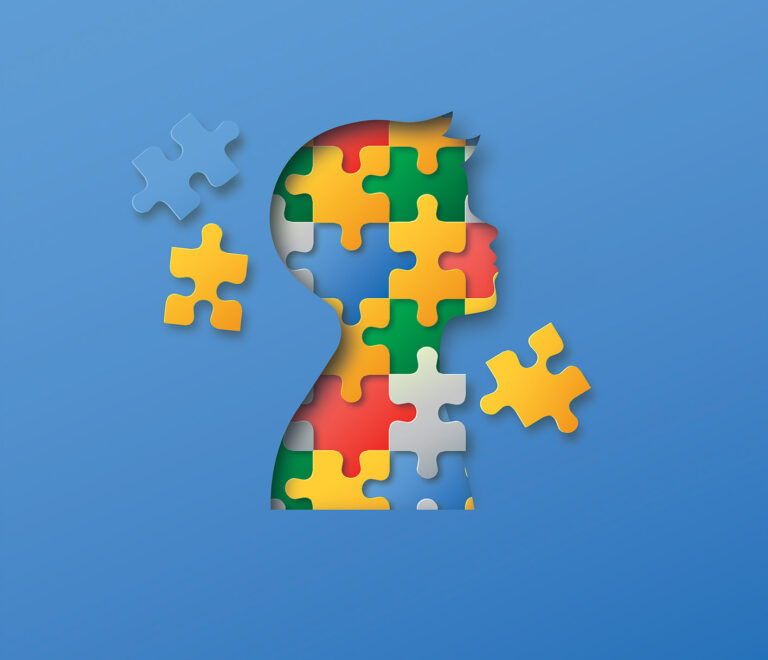By: Howard Olshansky, JFS Executive Director
As preparations begin for the High Holidays, our home and families gear up for the most special time of year in the Jewish culture. We anticipate gathering with family we might not often see, plan for special meals, attendance at High Holiday services and some families might be traveling to be with extended family. For many all this planning can be stressful. However, for a family with a child or adult on the autism spectrum, preparing for the holidays is much more than just a heightened level of stress.
Let’s start by understanding the scope of the issue. Autism Spectrum Disorder (ASD) is increasingly recognized: in the United States, 1 in 31 children—about 3.2 percent—were identified with ASD by age 8. Extrapolating to the adult population, approximately 5.4 million U.S. adults—or around 2.2 percent—live with autism. Globally, the estimated prevalence is roughly 1 in 100 children, though some newer estimates suggest closer to 1 in 127 individuals—about 61.8 million people worldwide. Given these figures, it’s likely many families will share the holidays with someone on the spectrum—making preparedness and empathy important.
When a loved one is on the autism spectrum, the Holidays can bring multiple challenges especially given sensory sensitivities, disrupted routines, and social expectations. Understanding these dynamics is key to crafting a more inclusive, supportive holiday experience.
Key Challenges
- Disruption of Routine
Autistic individuals often depend on predictability. Holidays naturally interrupt daily structure—travel, staying at different homes, altered sleep and meal schedules—all of which may trigger stress or behavioral challenges. Establishing a simplified schedule or visual plan for each day can help ease transitions.
- Sensory Overload & Environment Stressors
Crowded gatherings, loud music, festive lights, diverse foods, and ambient smells can overwhelm someone with sensory sensitivities. Packing a “sensory survival kit”—noise-reducing headphones, familiar snacks, fidget toys, or sunglasses—offers immediate relief. Visiting a new venue beforehand, viewing pictures or maps, or identifying quiet spaces can provide predictability and reduce anxiety. This is especially relevant if you are planning to attend services.
- Social Expectations & Communication Strain
Holiday gatherings often come with intense social interaction: small talk, group conversations, mingling with distant relatives. People with ASD may struggle to participate or may disengage completely. It helps to carve out breaks—moments of downtime or exits to calm spaces. Offering advance notice about who will be there, along with clear expectations (“we’ll have a meal, share gifts, then watch a movie”), allows better emotional preparation. Please keep this in mind if you are hosting someone on the spectrum and make as many accommodations, as possible.
- Fraying Family Dynamics & Fatigue
Caregivers may face emotional and physical tolls during holidays, especially when attempting to balance everyone’s needs. Siblings may feel overlooked; parents may struggle to juggle specialized support alongside holiday tasks. Building in individual time—quiet breaks, one-on-one attention, rotating responsibilities—can help reduce burnout and maintain connection.
Some strategies to plan for a smoother High Holiday experience
Prep with visuals and predictability
Share images of the holiday location or attendees.
Use calendars, timers, or checklists to communicate what’s coming next.
Create sensoryfriendly spaces
Identify or designate quiet zones in the event space.
Bring comfort tools: headphones, weighted blanket, favorite object.
Set clear expectations with guests
Brief visitors gently about sensory needs or communication styles.
Ask relatives to avoid surprises and respect schedules.
Offer choices and autonomy
Let your loved one control pacing: rest first, socialize later; choose meal order; skip certain activities if they feel uncomfortable.
Balance traditions with flexibility
Stick to core routines, when possible, but be ready to adapt.
Prioritize meaningful parts of celebration and let go of others.
Look after caregiver wellbeing
Schedule breaks and enlist help from others.
Use virtual check-ins or supportive resources if in-person help is limited.
Why It Matters
Managing holidays with an autistic loved one is more than logistical planning—it’s an act of inclusion and love. By holding space for their sensory, communication, and emotional needs, the experience becomes richer for everyone. It models respect for neurodiversity and nurtures deeper family bonds. As prevalence continues to rise—1 in 31 children in the U.S., and around 1 in 127 people globally—more families will engage in this balancing act, making awareness and adaptive practices vital.
Final Thought
The holidays may never be as carefree or spontaneous if you’re supporting a loved one on the spectrum—but they can be deeply meaningful. With preparation, sensitivity, and open communication, you can craft celebrations that honor everyone’s comfort and joy. After all, the true gift is connection—shared in ways everyone can feel included.

